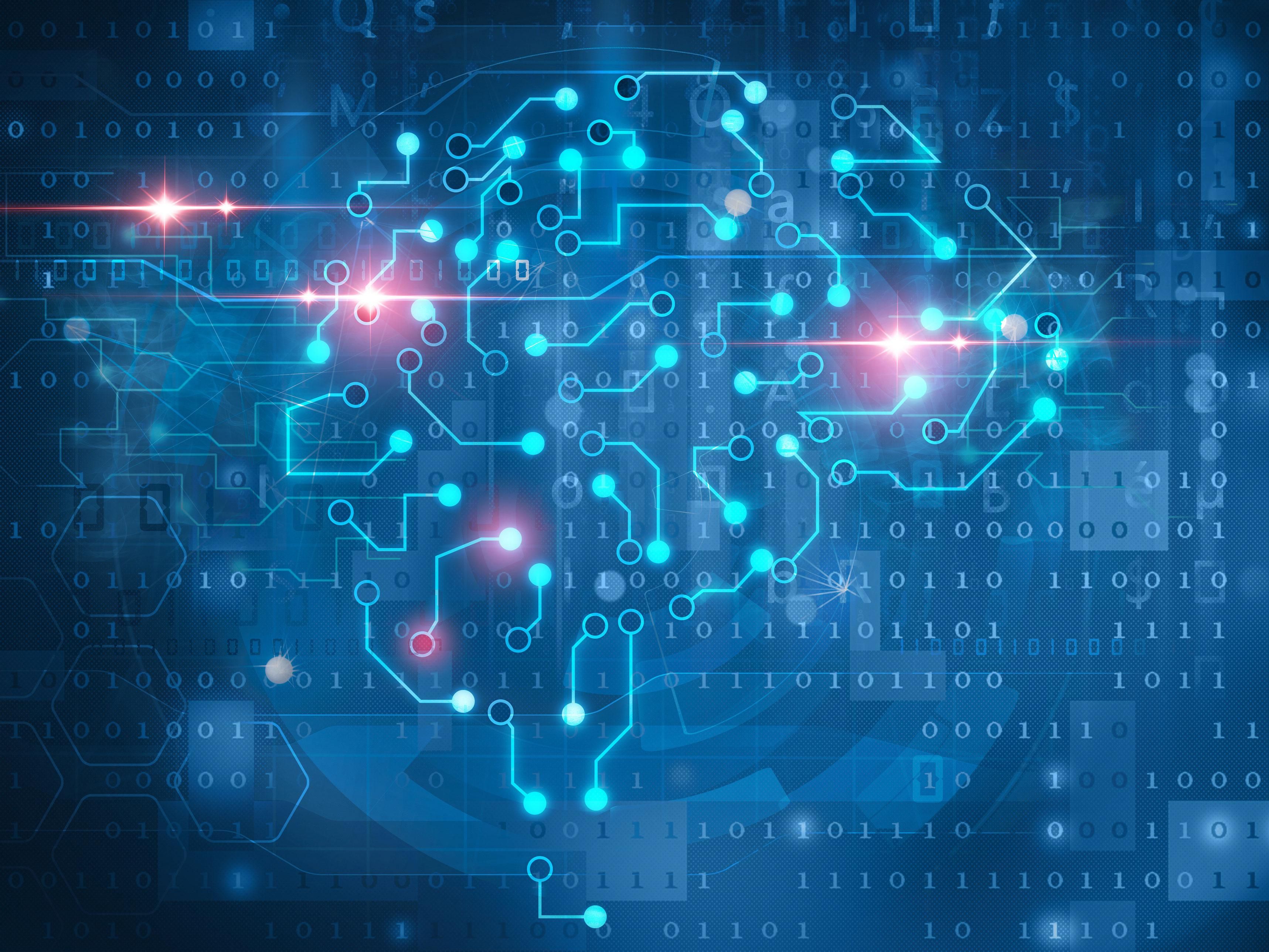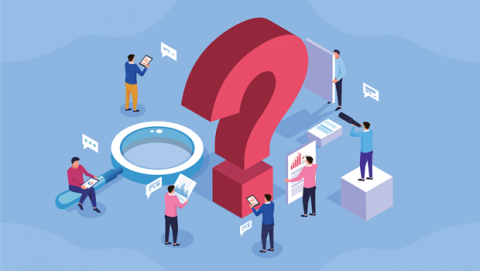Yann LeCun: AI Doesn’t Need Our Supervision

Self-supervised learning (SSL) allows us to train a system to learn good
representation of the inputs in a task-independent way. Because SSL training
uses unlabeled data, we can use very large training sets, and get the system to
learn more robust and more complete representations of the inputs. It then takes
a small amount of labeled data to get good performance on any supervised task.
This greatly reduces the necessary amount of labeled data [endemic to] pure
supervised learning, and makes the system more robust, and more able to handle
inputs that are different from the labeled training samples. It also sometimes
reduces the sensitivity of the system to bias in the data—an improvement about
which we’ll share more of our insights in research to be made public in the
coming weeks. What’s happening now in practical AI systems is that we are moving
toward larger architectures that are pretrained with SSL on large amounts of
unlabeled data. These can be used for a wide variety of tasks. For example, Meta
AI now has language-translation systems that can handle a couple hundred
languages.
Leading from the top to create a resilient organisation

In the rush to keep operations going, many businesses made quick decisions and
often, adopted the wrong services for their organisation. Our own research found
that over half (53%) of UK IT decision makers believe they made unnecessary tech
investments during the Covid-19 pandemic, and by speeding up or ignoring their
original strategy, have hindered their long term resilience. One thing almost
all businesses have recognised throughout the pandemic, is that their people are
the most critical and limiting factor to their business. Employee time is
valuable and by not having technology that supports them in their role,
productivity will drop, and employees may become an internal threat in terms of
cyber security. If businesses acknowledge that hybrid is the new normal, and
their people should be the priority, they can go some way to understand how IT
moves from an expense to adding value. Although most of this has stemmed from a
pandemic no one could have predicted, businesses and their leaders must now make
sure they haven’t created the perfect storm of a distributed, disconnected
workforce that is at risk of service outages.
Details of NSA-linked Bvp47 Linux backdoor shared by researchers

The attacks employing the Bvp47 backdoor are dubbed as 'Operation Telescreen' by
Pangu Lab. A telescreen was a device envisioned by George Orwell in his novel
1984 that enabled the state to remotely monitor others to control them.
According to Pangu Lab researchers, the malicious code of Bvp47 was developed to
give operators long-term control over compromised machines. 'The tool is
well-designed, powerful, and widely adapted. Its network attack capability
equipped by 0-day vulnerabilities was unstoppable, and its data acquisition
under covert control was with little effort,' they said. Complex code, Linux
multi-version platform adaption, segment encryption and decryption and extensive
rootkit anti-tracking mechanisms are all part of Bvp47's implementation. It also
features an advanced BPF engine, which is employed in advanced covert channels,
as well as a communication encryption and decryption procedure. The researchers
say the attribution to the Equation Group is based on the fact the sample code
shows similarities with exploits contained in the encrypted archive file
'eqgrp-auction-file.tar.xz.gpg' which was posted by the Shadow Brokers after the
failed auction in 2016.
Cloud computing vs fog computing vs edge computing: The future of IoT

Cloud computing is the process of delivering on-demand services or resources
over the internet that allows users to gain seamless access to resources from
remote locations without expending any additional time, cost or workforce.
Switching from building in-house data centres to cloud computing helps the
company reduce its investment and maintenance costs considerably. ... Fog
computing is a type of computing architecture that utilises a series of nodes to
receive and process data from IoT devices in real-time. It is a decentralised
infrastructure that provides access to the entry points of various service
providers to compute, store, transmit and process data over a networking area.
This method significantly improves the efficiency of the process as the time
utilised in the transmission and processing of data is reduced. In addition, the
implementation of protocol gateways ensures that the data is secure. ... Cloud
or fog data prove to be unreliable when dealing with applications that require
instantaneous responses with tightly managed latency. Edge computing deals with
processing persistent data situated near the data source in a region considered
the ‘edge’ of the apparatus.
Data Unions Offer a New Model for User Data

One of the promises of a decentralized Web3 is the notion that as users we can
all own our data. This is in contrast to Web 2.0, where the prevailing view is
that we the users and our data are the product being exploited for financial
gain by large centralized organizations. A data union is a scalable way to
collect real-time data from individuals and package that data for sale, in a way
that is mutually agreeable to both the data source and the packaging
application. Much like workers joining a union in real life to rally around a
common set of goals, data unions allow individuals to join these unions to
aggregate data in a controlled way, complete with the ability to vote on how and
where the data is used, through DAO (decentralized autonomous organization)
governance. For users, one challenge to the idea of controlling your data is
finding an interested buyer. Few data consumers want to go through the hassle of
acquiring data from one individual at a time. Data unions solve this by
aggregating data from a set of users who opt-in.
How to protect your Kubernetes infrastructure from the Argo CD vulnerability

In terms of the impact of this vulnerability, Apiiro has determined the
following (so far). Note that the following information was from Apiiro’s
website at the time of the announcement and may be subject to change. Please
refer to Apiiro’s website for the latest information. Here’s what we know about
the vulnerability and what it could enable an attacker: The attacker can
read and exfiltrate secrets, tokens, and other sensitive information residing on
other applications; The attacker can “move laterally” from their
application to another application’s data. The risk was given a severity rating
of high given that the malicious Helm chart could potentially expose sensitive
information stored on a Git repository and also “roam” through applications
allowing attackers to read secrets, tokens, and sensitive data that reside
within the applications. The team behind Argo CD quickly provided a patch that
impacted organizations should apply as soon as possible as the vulnerability
affects all versions of the tool. The patch is available via Argo CD’s GitHub
repository.
Understanding your automation journey

In order to achieve shorter-term automation goals, businesses need to evaluate
their existing automation needs and ask a few key questions. Are they seeking to
automate mundane tasks to increase personal productivity, such as processing
emails, setting up notifications or organising files? Personal productivity
automation is employee-driven and used to tackle multiple tasks for productivity
gains at the individual level. Are they seeking to streamline business
processes, such as processing a high volume of invoices or moving data from one
system to another? Business process automation (BPA) is also employee-driven but
it streamlines business processes to deliver efficiencies and productivity gains
across users and departments. Automation might also be an ongoing project, often
referred to as an automation Centre of Excellence (CoE), which focuses on
intricate, enterprise-wide automation and orchestration. CoE-driven automation
is fairly complicated and has a significant influence on automating connected
processes.
Going Digital in the Middle of a Pandemic
/filters:no_upscale()/articles/going-digital-pandemic/en/resources/2image005-1645551760453.jpeg)
Independent work-streams allowed them to work in parallel. Does that mean we did
not have any dependencies? Not really. We had a stand-up which we called as
Scrum of Scrum, conducted daily, with participation from each development team,
with focus on dependencies and impediment resolution during the iteration. Given
the nature of program and diverse set of stakeholders, we decided to conduct
consolidated program iteration planning and showcase events. Development teams
would conduct their planning meetings individually. And join this program
meeting to share summary of key features taken up in the iteration, and the
sprint goal. Lastly, to provide stakeholders a view of how we were progressing
against defined release milestones, we tracked progress against iteration goals
vis-à-vis release objectives. A release was defined as a set of features
required to board users from a specific Geography. We provided a one-page
weekly/fortnightly program summary to senior CIO leadership and program
stakeholders, with data from ALM tool, along with any blockers & issues that
needed executive leadership support.
Cyber Insurance's Battle With Cyberwarfare: An IW Special Report

While the clauses were issued in the company’s marketing association bulletin
and allowed individual underwriters flexibility in applying them to individual
policies, they were widely interpreted as signifying a shift toward
non-coverage. All of Lloyd’s cyber policies are expected to include some
variation of these clauses going forward. Lloyd's of London's definition of
cyberwar broadly includes “cyber operations between states which are not
excluded by the definition of war, cyber war or cyber operations which have a
major detrimental impact on a state.” Formal attribution is not necessary for
exclusion, an important caveat that would allow for broad latitude in making
determinations of whether a given event is actually cyberwar or not. “I think
you're going to see a lot more of that, unless there is legislation that comes
out that more specifically defines cyberwar. I don't think we're really seeing
it at this point,” notes Adrian Mak, CEO of AdvisorSmith. The language in the
individual contracts is “what is driving the coverage at this point. And also,
interpretation of that [language].”
Digital transformation: Do's and don'ts for IT leaders to succeed

Fear is a natural reaction when we enter uncharted territory. Moreover, the
digital transformation journey also requires skill, patience, and a huge
financial investment, which adds an extra level of anxiety. Many leaders are
uncertain about investing resources into an initiative that they are unsure of,
even if there are plenty of stats available to back it up. If you are feeling
uncomfortable, try to focus your energy toward embracing your digital
transformation initiative and giving it everything it needs to succeed. Remind
yourself that in time, you will witness the positive results of your efforts and
even scale your business’s revenue. Every enterprise and organization must
eventually make digitalization a strategic cornerstone to remain competitive and
better serve their constituents. If convenience, scalability, and security are
among your business priorities, implementing a thoughtful digital transformation
initiative is essential.
Quote for the day:
"Absolute identity with one's cause is
the first and great condition of successful leadership." --
Woodrow Wilson
No comments:
Post a Comment